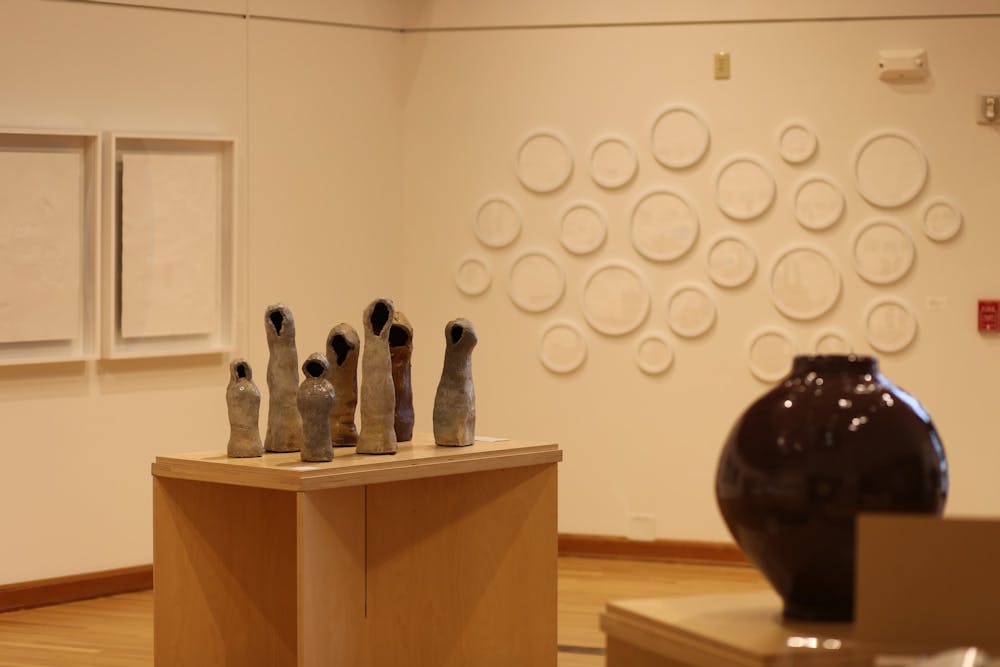The faculty art exhibition was displayed in the Metcalf Gallery on September 2 with art tastefully spilling over into the corridor outside. Brought to life by multiple members of Taylor’s art faculty, the exhibition was a platform for them to showcase their personal artistry through their recent works.
“We chose not to have a theme, as each of the artists are working with different materials, with different processes, with different times,” Professor Jeremie Riggleman said.
This presented the art faculty with a unique opportunity to express themselves free of any possible constraints.
However, underlying themes were present in the gallery. Undercurrents of emotions running smoothly like the art mounted on the walls clashed with the various sculptures that dotted the room.
Laura Stevenson’s works served as a focal point at the exhibition. Her blind embossings of household and childhood items on Stonehenge paper were her take on the event of miscarriages. With one in every four pregnancies ending in a miscarriage, deep amounts of sorrow are faced by countless mothers, the polar opposite of the joy they had felt up until that point. Through the fine creases and depressions on the paper, you could hear the wistfulness in Stevenson’s silent voice as she spoke for those mothers. You could hear a yearning for what did not come to pass, a sense of melancholic joy, a tinge of nostalgia.
Similar undercurrents of emotions rippled through Riggleman’s art. St. Simons Island is known as the setting of a mass suicide in 1803 by captive Igbo people who had taken control of their slave ship and refused to submit to slavery in the United States. Riggleman explored the connection to his idyllic childhood vacation there in his return to it forty years later. Riggleman wrote on the artwork label, “I was compelled to return to the island to explore how I, as a white male, had come to remember this land and sea and how it may differ from the way others have seen, experienced and know it.” He did this by photographing brightly-colored idealistic drawings from his childhood alongside sites that were of significance to the slave trade like a plantation, the sea, and the creek where the Igbos died.
Sounds of the sea linger in your ears as you drift from Riggleman’s works to Professor John Reishus’s sculptures. His abstract take on shrouded figures ties together the exhibition. They stand clumped together in groups on two solid stands — the empty spaces where their heads were supposed to be pointed directly at the entrance, staring the viewer down. Resishus’s work echoes Stevenson’s theme of positive and negative spaces, with negative space being in the foreground in his sculptures, contrary to Stevenson’s works. There is a marked irregularity in the figures too, symbolizing the differences that Christians have in their relationships with Jesus Christ.
Debra Shepler, Hannah Richardson, Ryan James, Jamie Miles and Jonathan Bouw were also featured for their work with different fabrics, metals, 3D images, illustrations and other forms of visual media. The exhibition will be in the Metcalf Gallery and open to visitors until October 22.





